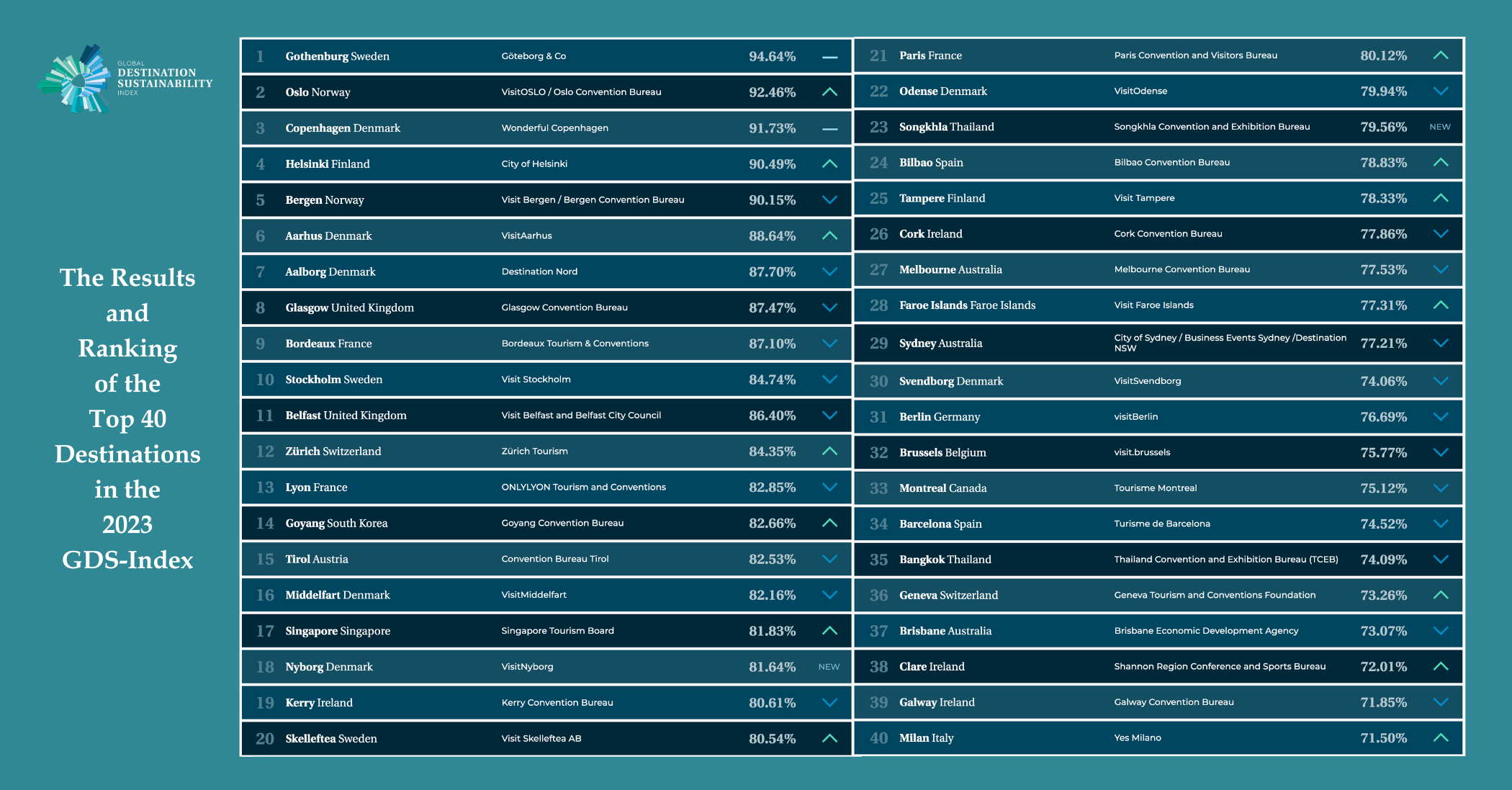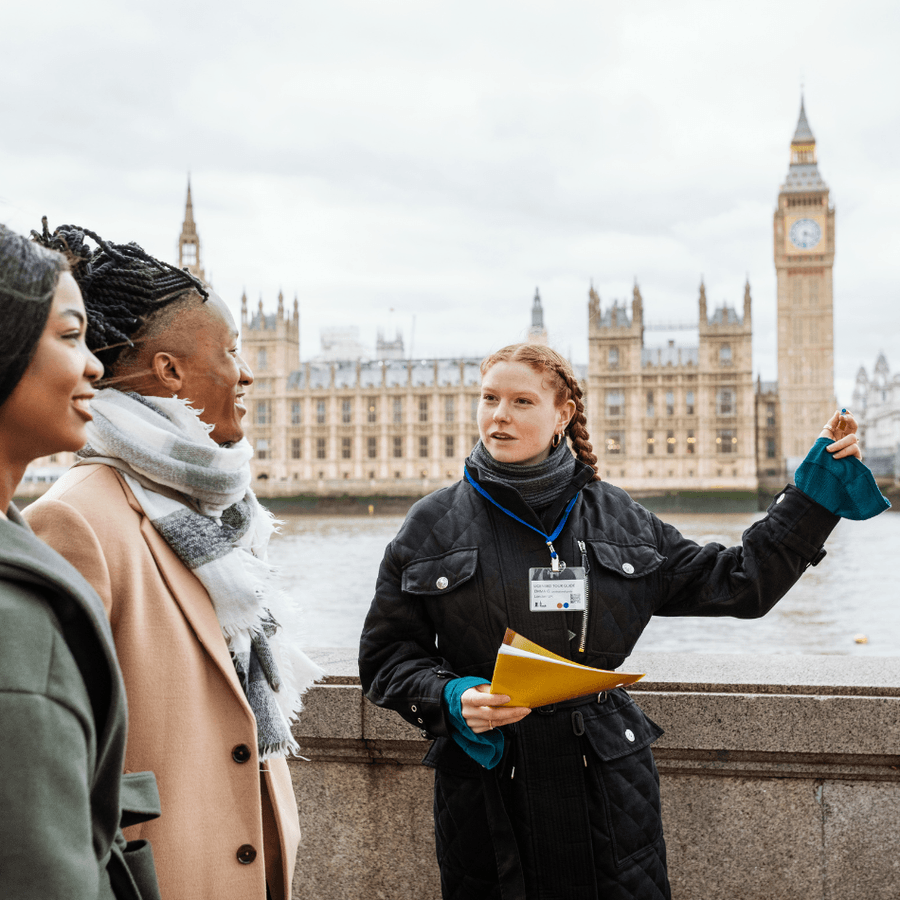It’s a qualifiable truth: Destination data needs a good narrative to come to life. Data has power, but to most, a spreadsheet full of facts and figures doesn’t say a whole lot, and that power may remain untapped and untold as long as it goes unexplained. That explanation is relative, too. Rows and columns and equations full of figures may make sense to the few gifted in numerical (or mathematical, or … statistical!) analysis, but most of us immediately understand a good story. Dress data up or strip it down and it can be magnetic and poetic and an irresistible pitch… or pull! We’re at a place right now where we aren’t sure what’s real, so how can destinations investing in regeneration go viral and maintain veracity? They tell true stories based on hard data.
Enter the GDS-Index, which measures and ranks destination sustainability efforts. It is based on verified and validated data that is gathered and updated annually. Here are six authentic stories about destination sustainability trends from our participating cities. Detailing destination sustainability strategy, participation, inclusion, certification, impact measurement, and the all-important governance, the appeal of these trends demonstrates that unpacking data is good for a brand and good for business (and that GDS-Index is, too!)
If you would like to use your data to tell your story, you may want to ask where the story is.
– It may not be obvious until you dig into it, ask questions, and find meaning.
– It’s often in the conflicts and the changes in the data.
– Look for contradictions, shifts (especially in averages), spikes, and dips.
(If you’re participating in the GDS-Index (or thinking of joining), you might want some help in crunching those numbers.)
By unpacking facts and figures, and illustrating them with real-world examples, you can move from “data rich” to “information rich” and educate your audiences, networks, and prospective clients so that they can more easily see the bigger picture, and their place and profit in it. Equipped with this insight, they can make smarter choices. If they know how your story can benefit their own, and both are designed to benefit people, place, and planet, you have their attention, and very possibly a contract with them! Tell them. Show them. It’s their journey, too!
From data to delight and insight: an example
Here’s a simple example.
Raw Data: “We keep a rooftop garden on our Convention Centre roof and harvest from it.”
The story? “Since we established Top of The World rooftop garden on our Convention Centre roof 2 years ago, corporations and associations pick – ahem – our venue over our competitors because here, their event delegates can
– get their hands dirty with a bit of “soil”-ful volunteering,
– rest and relax in “nature” – between conference sessions – in the heart of the built environment,
– enjoy its organic fruits, vegetables, herbs, and edible flowers in salads and stews served downstairs in the canteen,
– and know that their involvement keeps it going and makes the city cooler and healthier.
Plus, we give surplus produce to established food security charities in the area.”
Think it’s a dream? Not for Montreal, Singapore, Copenhagen, and Orlando. Each destination’s CVBs or key hotel/s have their own, real-life variations on this idea. May it be motivation for you to sow your own seeds and reap the rewards!
It’s all in your pitch
The sustainability movement has been on the rise in recent years. While DMOs and CVBs have begun investing more time, money, and effort into practices that protect and nurture the environmental, social, and economic aspects of their city or region, there is still a huge opportunity for many to do much more. Sustainability pledges can sound vague, abstract, and even insincere. Beautifully-crafted words count for inspiration and motivation, but action gets real credit because its impacts can be quantified.
…and in your plough
This is why a storytelling strategy counts!
Not only do magnetic communications campaigns based on proven sustainability performance raise your brand’s status and build trust with audiences, but the Global Destination Sustainability Movement believes that sharing action in addition to intention encourages others to do the same as well. To move closer to “destination regeneration” where we consistently measure and better manage our positive impacts towards ever-healthier places for all present, invest in genuine communications that are natural to your organisation.
But Wait! Avoid These Two Big Destination Storytelling Mistakes
Of course, the journey can have its challenges. A disconnection between the actions taken and their communication often leads to either:
greenwashing
also known as “talking without doing”
or
green hushing
also known as “doing without talking”
Greenwashing
This is sharing information that is either misleading or outright untrue about an organisation’s positive impacts and/or environmental credentials.
It may be the result of good intentions that lead to generalising or exaggerating, or simply an innocent misinterpretation of data, e.g. “according to the GDS-Index, we rank X in the world for sustainable destinations”. In fact, the GDS-Index does not measure and help improve the sustainability contributions of every destination on earth(yet!), so it’s important that the phrasing respects this reality, and it’s correct to say, instead, “we rank X out of 101 participating destinations in the 2024 GDS-Index”.
Vague concepts like planet-friendly, green and eco-safe are a warning flag (and a liability, under EU law). Even if it’s unintentional – greenwashing can lead to a lower brand sentiment, or legal action in the EU. It’s important to check your messaging and marketing to see if you’re telling a true tale, or stretching the truth, and to be sure you’re compliant with the law in your region/country.
Green hushing
Green hushing has 2 forms – active and passive.
While it’s unlikely that you’re practising the active form of it like Canon and others do, i.e. deliberately manipulating information to cover up environmental misdeeds, you might be green hushing more passively. You might even feel this is honourable and honest. Is it possible you are under–reporting your efforts because you lack information? Or because you mistakenly think you need to be further along your journey to speak about it? If you don’t speak about it, nobody will even know you’re on it, and this sort of green hushing is fast becoming a competitive disadvantage!
Even if your destination is just starting out on its sustainability journey, there may be sustainability steps worth talking about it, like Liverpool happily discovered when they joined GDS-Index and we asked a few leading questions.
TOP TIP: Avoid both greenwashing and green hushing and keep it real(istic)!
The softer form of the second approach might seem humbler, but neither of them is effective for developing your customers’ trust and winning you more (of the right) business.
Lead with authentic, down-to-earth and relatable accounts of your efforts to measure and improve your destination management so that tourism and events contribute to the positive transformation of your destination.
These cities have a lot to talk about because they’re measuring their regenerative efforts with GDS-Index.

We also love this responsible marketing guide for influencers, press, and photographers, from Bergen.
Have a look at Singapore’s sustainability contributions
Get to know Montreal’s sustainability efforts
Get to know Copenhagen’s sustainability performance
You and your team can learn destination storytelling with the Storytelling and Communication Strategies for Regeneration Masterclass from GDS-Academy
Want to know more?
- Discover the top 6 trends emerging from tourism and events focused on greater positive impact
- Join GDS-Index
- Explore the data in GDS-Index destinations








